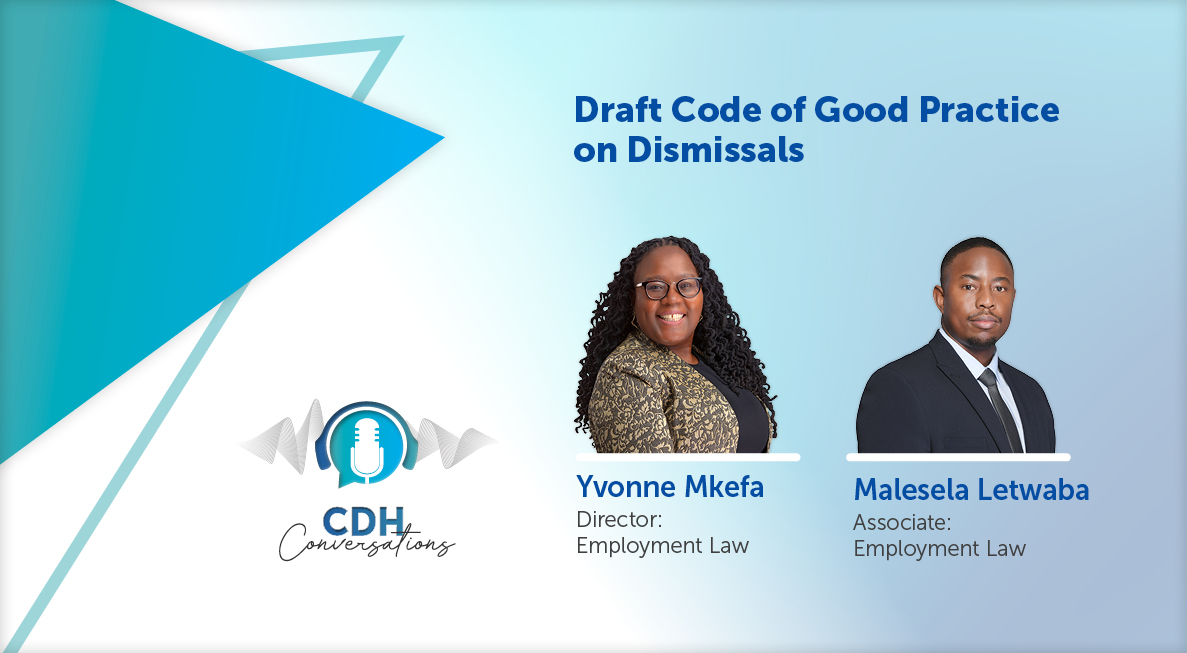Take a number: The status of employees’ claims to remuneration in business rescue proceedings
One such aspect is the interaction between section 135 of the Act, dealing with the ranking of creditors in business rescue proceedings, and section 134(3), dealing with the rights of pre-business rescue secured creditors. In the recent case of NUMSA v VR Laser Services (Pty) Ltd (19419/19) [2020] ZAGPJHC 47, the Gauteng High Court provided some much-needed clarity on this interaction.
Summary of the facts
After a series of unfortunate events, including the eventual loss of access to banking facilities, the Gupta owned company, VR Laser Service, was placed into business rescue. In line with the provisions of the Act, two business rescue practitioners (practitioners) were appointed to salvage the situation. Apart from putting together several business rescue proposals, the practitioners also urged all service providers and employees to continue rendering services, notwithstanding the fact that they would not be paid immediately. The promise was made by the practitioners that their remuneration would form part of post commencement financing (PCF) and as such would carry preferential weight in terms of section 135
of the Act.
More than two months passed, and no business rescue plan had been agreed on. Furthermore, the employees of VR Laser had not been paid, but since they were technically still employed, they could not receive unemployment benefits either. Eventually the practitioners proposed a fourth and final plan, which provided creditors with the option to either vote for a “controlled liquidation” of the company, that would be overseen by the practitioners, or a “court ordered liquidation” in terms of the Act.
The practitioners made it clear that the first option was more beneficial, since a court ordered liquidation would result in employees being dismissed and potentially losing out on their claims against the company (they failed to mention that a “controlled liquidation” would have the exact same outcome). Needless to say, the majority of creditors voted for “controlled liquidation” and two weeks later the practitioners terminated the services of all employees. It is worth noting that “controlled liquidation” was never an option lawfully available to the practitioners (in terms of the Act or otherwise), since once liquidation proceedings commence, there can be no business rescue and the services of the practitioners are no longer required.
In an attempt to satisfy the debts owed by VR Laser Services, the practitioners subsequently auctioned off certain assets over which the Bank of Baroda (the Bank) (as a pre-business rescue creditor) held security. The proceeds of the sale amounted to approximately R32 million, of which R29,5 million was owed to the Bank.
The practitioners, without notifying the other creditors, intended to use these proceeds to fully liquidate the debt owed to the Bank. The employees, represented by NUMSA (the first applicant in the matter), discovered this intention and urgently wrote to the practitioners urging them not to pay the Bank. The employees contended that their claim ranks above that of the Bank and relied on the court’s interpretation of section 135 of the Act in the case of Redpath Mining South Africa v Marsden NO and others (2013), which states that claims rank as follows:
- The practitioner, for remuneration and expenses.
- Employees for any remuneration which became due and payable after business rescue i.e. the PCF.
- Secured lenders/creditors - after business rescue proceedings began.
- Unsecured lenders/creditors - supply made after business rescue proceedings began.
- Secured lenders/creditors for any loan or supply made before business rescue proceedings began.
- Employees remuneration before business rescue proceedings began.
- Unsecured lenders or other creditors for any loan or supply made before business rescue proceedings began.
NUMSA applied to court for a declaratory order that the claims of the employees, which accrued post business rescue, rank above that of the Bank and that the proceeds of the sale of the secured assets should be used to settle the money owed to the employees as PCF.
The Court’s findings
On the facts before it, the court was required to determine whether the proceeds from the sale of the assets over which the Bank held security, as a pre-business rescue secured creditor, may be used to settle the PCF debt owed to employees, and consequently whether these claims rank above that of the Bank.
The court did not disagree with the ranking of claims set out in section 135, but rather turned its attention to section 134(3) of the Act, which deals with the sale of secured assets during business rescue proceedings.
The section determines that when a secured asset is sold, the creditor in whose favour the security was held, is fully entitled to the proceeds of the sale. It differs from security in terms of section 135(2)(a), which security only arises after the commencement of business rescue proceedings.
The court held that “[t]he provision is robust and firm. Leaving no room for doubt, the legislature has made crystal clear its intention” and highlights the fact that the protection granted by section 134 to a pre-business rescue secured creditor is all encompassing, protecting it against “all eventualities”. It quoted as authority the Supreme Court of Appeal in Diener v Minister of Justice 2018 (2) SA 399 (SCA) where it held that business rescue proceedings should not be seen as diluting or undermining security in any way.
Therefore, the order of claims set out in section 135 does not affect the workings of section 134(3) and does not diminish the protection provided thereby. The court accordingly dismissed the application.
Conclusion
This judgment has made it abundantly clear that preferential ranking of employees’ claims in section 135 of the Act in business rescue proceedings is only enforceable to a certain extent and is limited by the security of section 134. Essentially, assets that had been secured prior to the commencement of business rescue proceedings cannot be used to satisfy the claims of PCF creditors, unless the creditors in whose favor the assets were secured, had been paid in full.
Apart from providing clarity on the interaction of the above sections, this case also highlights the potential dangers of business rescue practitioners being left unchecked. In setting out its judgment, the court is clearly alert to the irresponsible and unlawful way in which the practitioners were found to have carried out the business rescue proceedings in this matter. The court even goes as far to record the reckless behavior of the practitioners in its judgment, although it does not make a finding against them.
We hope that all business rescue practitioners will take heed of this judgment and ensure that they properly and lawfully carry out their duties in accordance with the provisions of Chapter 6 of the Act. Creditors should keep in mind that should they believe that the appointed practitioner is acting in contravention of the Act in carrying out his/her duties, they can apply to court to have the practitioner removed and a new practitioner appointed.
The information and material published on this website is provided for general purposes only and does not constitute legal advice. We make every effort to ensure that the content is updated regularly and to offer the most current and accurate information. Please consult one of our lawyers on any specific legal problem or matter. We accept no responsibility for any loss or damage, whether direct or consequential, which may arise from reliance on the information contained in these pages. Please refer to our full terms and conditions. Copyright © 2026 Cliffe Dekker Hofmeyr. All rights reserved. For permission to reproduce an article or publication, please contact us cliffedekkerhofmeyr@cdhlegal.com.
Subscribe
We support our clients’ strategic and operational needs by offering innovative, integrated and high quality thought leadership. To stay up to date on the latest legal developments that may potentially impact your business, subscribe to our alerts, seminar and webinar invitations.
Subscribe



